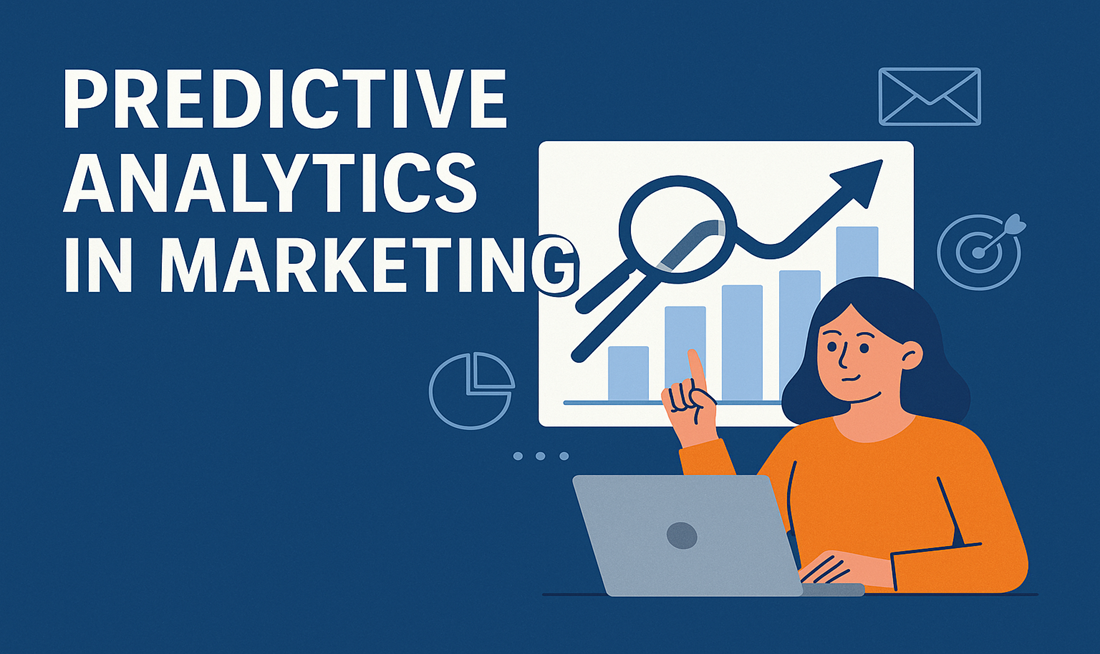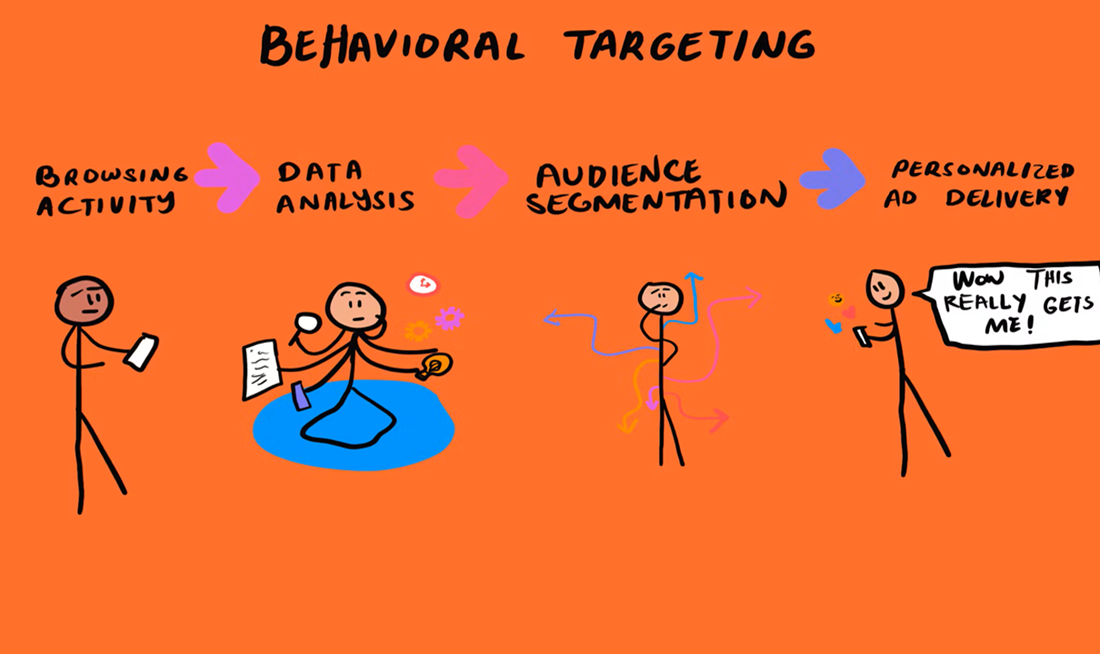How Predictive Analytics Helps You Sell Smarter
Welcome to the era where data drives decisions. If you’re still marketing based on guesses and gut feelings, you’re missing out. Predictive analytics is no longer just a buzzword—it’s a game changer. From understanding buyer behavior to crafting razor-sharp campaigns that convert, predictive analytics helps you sell smarter and faster.
In this post, we’ll dive deep into how predictive analytics is transforming digital marketing, improving customer retention, boosting ROI, and reshaping how businesses—big and small—sell in 2025 and beyond. Whether you’re running a marketing agency, managing an eCommerce store, or just looking to sharpen your B2B marketing strategy, this guide has something for you.
What Is Predictive Analytics in Digital Marketing
Predictive analytics in digital marketing is the practice of using data, statistical algorithms, and machine learning to forecast future customer behavior. It takes data from various sources—your CRM, social media, ad campaigns, website traffic and predicts things like what your customer will do next, what products they might like, or when they might churn.
Instead of guessing which ad will perform better or what type of content will resonate, predictive analytics gives you a clear direction. It removes uncertainty from marketing and replaces it with data-backed confidence.
Why Predictive Analytics Improves Marketing Results
The real power of predictive analytics lies in precision. When you know your audience’s next move, you can act ahead of time. This proactive approach leads to better targeting, more conversions, and higher retention.
For example, predictive analytics for customer retention helps you identify customers who are likely to leave before they actually do. With this insight, you can launch targeted campaigns to win them back. Predictive modeling for eCommerce works in a similar way it recommends products based on a shopper’s browsing history, increasing the chances of a purchase.
Machine learning in predictive marketing continually improves these models. The more data you feed them, the smarter they get. Over time, your campaigns become more efficient and effective.
Building Predictive Marketing Strategies That Work
Predictive marketing strategies are only as strong as the data behind them. Start by identifying the outcomes you want—higher sales, lower churn, better engagement—and work backward.
Using AI for predictive marketing helps map out the customer journey from the first click to conversion. It reveals patterns, triggers, and behaviors that indicate buying intent. These insights fuel your strategy with facts, not assumptions.
For example, customer segmentation with predictive analytics allows you to group your audience based on behavior, not just demographics. You can then send highly personalized messages that feel timely and relevant.
Best Predictive Analytics Tools for Marketers
Choosing the right tools is key. The best predictive analytics tools for marketers are user-friendly, integrate with your current systems, and deliver real-time insights.
CRM predictive analytics tools like Salesforce Einstein or HubSpot Predictive Lead Scoring can help you prioritize leads who are more likely to convert. These tools use past customer interactions to score new leads, so you’re not wasting time on dead ends.
If you’re running email campaigns, platforms with email marketing predictive analytics like Mailchimp or ActiveCampaign can optimize send times, subject lines, and content based on historical performance.
Social media marketing predictive analytics tools such as Sprout Social or Hootsuite Insights show you which posts drive the most engagement, helping you schedule content when your audience is most active.
Predictive analytics software for small businesses like Zoho Analytics or Piwik PRO makes this tech more accessible, offering smart dashboards and recommendations without the enterprise price tag.
Predictive Analytics in Content Marketing
Ever wondered why some blog posts go viral and others flop? Predictive analytics in content marketing takes the guesswork out. It helps you understand what kind of content performs best for different segments of your audience.
SEO optimization using predictive analytics lets you choose keywords with a high chance of ranking and converting. Instead of chasing every trending term, you can focus on the ones your audience is actually searching for.
Predictive analytics also tells you when to publish, what tone to use, and even which CTAs get more clicks. Tools like MarketMuse and Clearscope use deep learning in marketing prediction to analyze what your competitors are doing and how you can beat them.
Personalized Marketing with Predictive Analytics
Customers crave personalization. Predictive analytics takes personalization to the next level by delivering messages tailored to a user’s specific behavior, not just their name.
Whether it’s predictive analytics in advertising campaigns or product recommendations, AI-driven systems predict what people want before they even ask. Amazon’s “You might also like” feature is a classic example of predictive analytics in product recommendations.
With predictive analytics for lead scoring, you can personalize outreach based on where a lead is in the funnel. Someone who just signed up for your newsletter might get educational content, while a returning visitor might see a discount code or offer.
This level of personalization improves the entire customer experience, leading to better results across the board.
Predictive Analytics and the Customer Journey
Understanding the customer journey is at the heart of every successful marketing campaign. Predictive analytics maps out this journey in detail. It tells you when a customer is likely to buy, bounce, or need a nudge.
Predictive analytics and customer journey mapping allow you to intervene at the right time with the right message. Whether it’s a follow-up email, a retargeting ad, or an SMS reminder, timing is everything.
Predictive analytics in customer engagement helps you keep customers interested and coming back. Instead of bombarding them with irrelevant messages, you’re giving them exactly what they want—when they want it.
Predictive Analytics for ROI Improvement
Let’s be honest every marketer is judged by results. Predictive analytics for ROI improvement gives you the edge. By analyzing what works and what doesn’t, you can shift budget and resources to campaigns that deliver real value.
Sales forecasting using predictive analytics gives you a realistic look at future revenue. It helps you set better goals, make smarter decisions, and prove your value to stakeholders.
Predictive analytics for targeted ads means fewer wasted impressions and more relevant clicks. You’re reaching people who are already interested in what you’re selling, so your cost per acquisition drops.
Real-time predictive analytics in marketing gives you the flexibility to tweak campaigns on the fly. If something isn’t working, you’ll know right away—and you’ll have the data to fix it.
Predictive Analytics Marketing Case Study
Let’s look at how this works in the real world.
A mid-sized eCommerce business wanted to reduce churn and increase repeat purchases. Using predictive analytics for customer lifetime value, they segmented their audience based on behavior and purchase frequency.
They launched personalized email campaigns featuring predictive product recommendations and retargeting ads powered by machine learning in predictive marketing. Within six months, they increased customer retention by 30% and boosted average order value by 22%.
This predictive analytics marketing case study proves that when done right, the results are impressive—and fast.
How to Use Predictive Analytics for Upselling and Cross-Selling
If you’re not using predictive analytics in cross-selling strategies, you’re leaving money on the table. These models can analyze past purchases and behavior to suggest complementary products.
Think about when you’re buying a phone and get a suggestion for a case or screen protector. That’s predictive analytics in action. When used well, it feels helpful—not pushy.
The same goes for upselling. Predictive analytics for upselling tells you who’s ready to buy more expensive packages or add-ons. It helps you craft messages that gently guide them toward the upgrade.
Predictive Customer Behavior Analysis
At the heart of everything is understanding your customer. Predictive customer behavior analysis reveals trends that are hard to spot with the naked eye.
You’ll find out things like how long it takes a typical customer to convert, what content moves them down the funnel, or when they’re likely to drop off.
Customer behavior prediction tools like Mixpanel, Heap, or Amplitude help you make sense of these patterns. This lets you create smoother funnels, smarter automations, and campaigns that feel more intuitive.
The Future of Predictive Marketing
Predictive marketing is only getting smarter. With the rise of deep learning in marketing prediction and AI-powered predictive marketing tools, expect faster insights and even more accurate forecasts.
Google Ads predictive analytics is already helping marketers optimize campaigns with real-time bidding and audience insights. Platforms like Meta are pushing predictive tools into influencer marketing, letting brands know which creators will drive real engagement.
The future of predictive marketing is all about agility. Brands that can adapt quickly to trends and customer signals will win. And those using predictive analytics in B2B marketing and influencer marketing will stand out with hyper-targeted campaigns that get noticed.
How to Start with Predictive Analytics in Marketing
If you’re new to this, start simple. Begin with tools that integrate with your current CRM or ad platform. Learn to read the dashboards and watch how the predictions line up with real results.
Start using predictive analytics in marketing automation to refine your email flows and customer journeys. Test predictive analytics for market trend analysis to stay ahead of your competition.
Once you’re comfortable, dive into more advanced tactics like AI-powered content recommendations or predictive analytics in brand positioning.
Conclusion
Selling smarter means making better decisions and nothing helps you do that like predictive analytics. From customer segmentation to email campaigns, product recommendations to ROI improvement, predictive analytics in digital marketing changes the game.
If you’re serious about growing your brand, staying competitive, and making the most of every dollar you spend on marketing, then predictive analytics isn’t optional anymore it’s essential.
Here at Student Teacher Location, we’re always exploring smarter, data-driven ways to improve digital strategy. Whether you’re a small business, a scaling startup, or a full-blown agency, predictive analytics gives you the insights you need to connect, convert, and grow.



